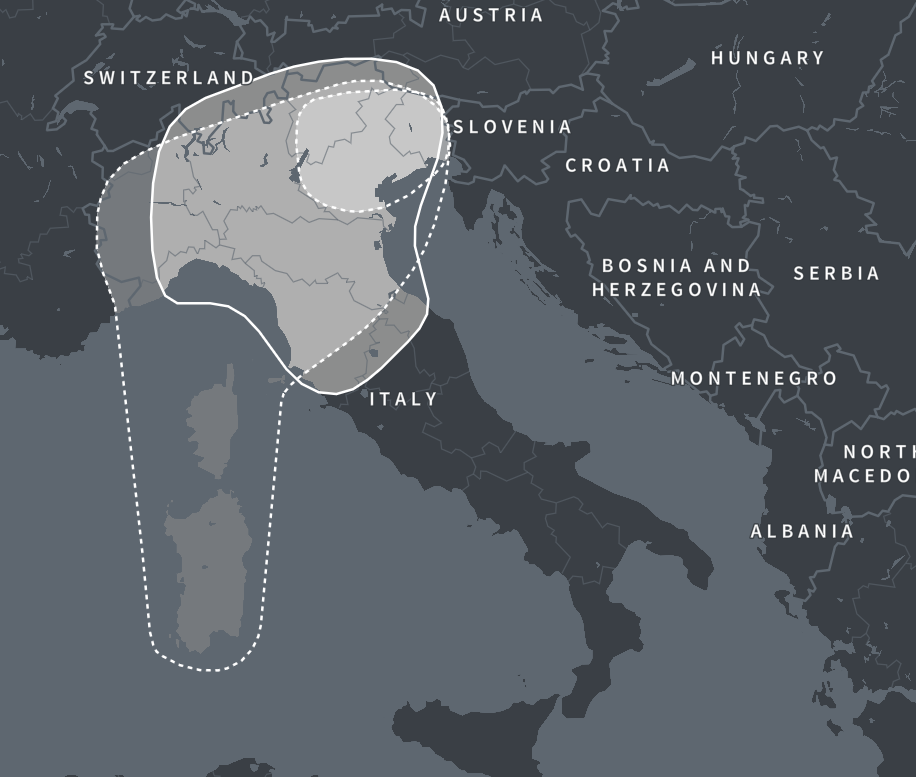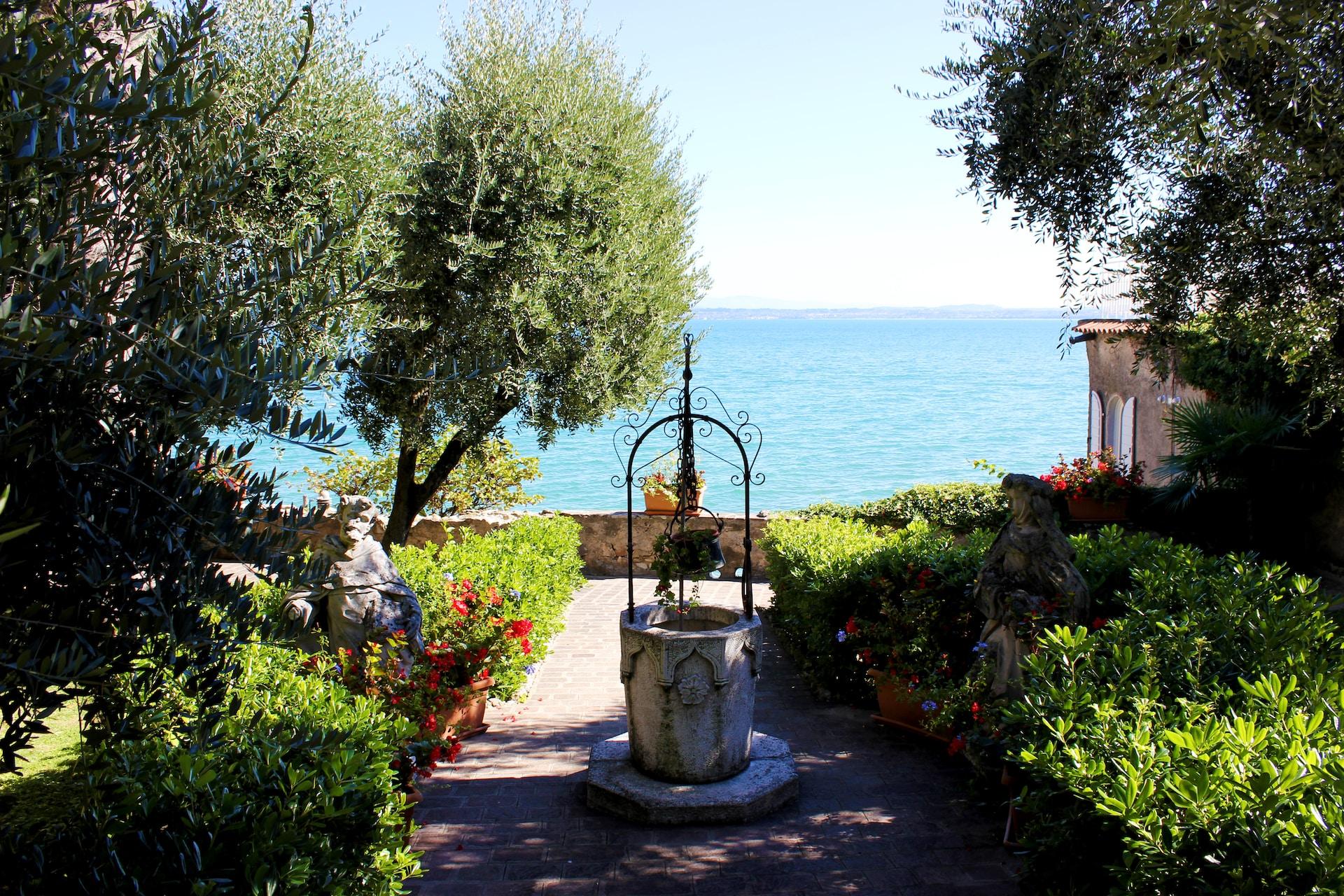What is Northern Italy DNA Ethnicity on Ancestry?
The results of our AncestryDNA tests may sometimes be what we expect or on occasion may be a big surprise. Either way, often we need a little more information regarding some of the regions that arise in our ethnicity estimates.

One region that is not at all uncommon is the Northern Italy DNA region. Those who still live in this region already understand all about its history and culture. There are others, however, who may never have even visited or in fact been aware that they have ancestors from that area.
In this post we will go into more detail with regards to the history, geography and culture of the Northern Italy region. We will also discuss what it means to be from this region and how easy or difficult it might be to trace our roots in the Northern Italy Region.
What Is the Northern Italy DNA Region?
The Northern Italy DNA region as the name suggests covers a large area of northern Italy as well as parts of the neighboring nations of Slovenia, Austria, Switzerland, France and the Principality of Monaco. It extends down into mainland Italy as far south as Perugia and also includes the islands of Corsica and Sardinia off the west coast of the country.

Northern Italy DNA Region Subregions
There are two subregions to the Northern Italy DNA region which may help researchers to determine where in the region their ancestors may have originally come from.
North Italy
The North Italy subregion focuses on the more northerly part of the country including cities such as Pisa, Genoa and Parma. It also extends into part of the principality of Monaco. There are four additional subregions to the North Italy region which are:
- Cremona & Parma & La Spezia
- Genoa & Piacenza
- North Tuscany & Emilia-Romagna
- Northwest Italy & Sardinia
Northeast Italy
This small subregion as the name suggests focuses on the northeastern region of Italy including cities such as Verona and Padua. It also crosses over into parts of western Slovenia. Unlike the North Italy region it does not have any additional subregions of its own.
Northern Italy Region History
Northern Italy Prehistory
Excavations throughout Italy revealed a Neanderthal presence dating back to the Middle Paleolithic period which was some 200,000 years ago. Modern humans however appeared about 40,000 years ago in Northern Italy.

The early peoples of Northern Italy include the Ligures and Veneti who prospered in the region through the trade in amber and breeding horses. Another group, the Etruscans who resided in northern Italy since the early Iron Age would eventually found the city of Bologna.
Celts and the Gauls
Starting in the 5th century BC Northern Italy became a target for Celtic and Gallic tribes. These tribes from the west and south would found cities in the region which included Turin (Taurini tribe) and Milan (Celtic Insubres).
These Celtic invaders would extend their rule in the region into Southern Italy but the expansion north by the Romans in the Po valley from the 3rd century BC halted their advance. After centuries of war the Romans would drive the Celts back and by 194 BC Northern Italy was under their control.
Roman Empire in Northern Italy
The strategic role of Northern Italy was such that the capital of the Western Empire was moved from Rome to Mediolanum in 286 AD. It would later move to Ravenna from 402 Ad until the empire finally collapsed in 476 AD.
After the fall of the Western Empire, Northern Italy would suffer heavily from the destruction brought about by the migration of Germanic peoples. It was by 493 AD that the Ostrogoths managed to develop a stable and prosperous kingdom in the region.
In the 570s the Germanic Lombards, or Longobardi, would enter Northern Italy from Friuli and gave the region its name Lombardy. There were early conflicts between the Lombards and the Latin-speaking locals but relations improved rapidly. Ultimately, the Lombard language and culture would be assimilated with the Latin culture, leaving evidence of this in place names, the legal code and laws.
Lombard rule came to an end in 774, when the Frankish king Charlemagne arrived and conquered Pavia. He would depose Desiderius, the last Lombard king, and go on to annex the Lombard Kingdom into his empire renaming it the Kingdom of Italy.
How Did You Get Northern Italy Region DNA?
If you already know that you had family who came from Northern Italy or any of the bordering states then you know why you have Northern Italy region DNA. If this result came as a surprise you may not know how exactly you came by DNA from this region.
If you have a sizable percentage of DNA from this region then it is likely you have an ancestor who was born in or close to the country of Northern Italy.
Is the Result Accurate?
When it comes to ethnicity estimates the higher the percentage you have from a certain region the more likely it is to be accurate. If your percentage is low, however, then it is harder to pinpoint exactly where your most recent ancestors came from.

A low result could mean a distant ancestor from that region. It is best to focus on your highest rated region's matches to determine where your ancestors came from more recently. A low percentage can often be hard to locate because the ancestor in question could be many generations back in your tree.
How to Research my Ancestry from These Regions
The results of a DNA ethnicity test are of course a great place to start especially if there is an unexpected result found in the report. As always of course the DNA cannot tell the whole story and we need to actually do the research work.
A percentage on an ethnicity estimate means very little unless you follow through and start building up your family tree. The relevant ancestors may be several generations back and it may take a lot of research to discover who they were.
If you have specific regions mentioned in your report then you have a good idea of where your ancestor may have originated from. Ancestry DNA even has migratory information from some of these regions through to the final settlement places in the United States or elsewhere in the world.
Using Ancestry you may be able to determine not only who your ancestors were from the British Isles but perhaps the reason they decided to move.
Italian Migration
Notably it was an Italian Christopher Columbus who was among the first Europeans to arrive in the Americas but as he was sailing under the flag of Spain it would be the Spanish who began early colonization.
Italian migration to the new world really started between 1776 – 1860 and at first was very gradual. There were around 7,000 Italians who served during the American Civil war mostly on the side of the Union but the true bulk of migration started around 1880. In less than a quarter of a century from 1880 – 1914, 13 million Italians left Italy 4 million of which came to the United States.
Final Thoughts
Northern Italy has a long history and its peoples saw a great deal of influence from northern tribes such as the Celts and the Gauls. Obviously the Romans played a major role in the region but would eventually be displaced by Germanic tribes who themselves would be displaced by the forces of Charlemagne.
This region has connections through the Alps to Switzerland, Austria and France and the DNA that is common in Northern Italy can be found in the mountainous regions of these countries.
Link To or Reference This Page
We spent a lot of time downloading, cleaning, merging, and formatting the data that is shown on the site.
If you found the data or information on this page useful in your research, please use the tool below to properly cite or reference Name Census as the source. We appreciate your support!
-
<a href="https://namecensus.com/blog/what-is-northern-italy-dna-ethnicity-on-ancestry/">What is Northern Italy DNA Ethnicity on Ancestry?</a>
-
"What is Northern Italy DNA Ethnicity on Ancestry?". NameCensus.com. Accessed on May 4, 2024. https://namecensus.com/blog/what-is-northern-italy-dna-ethnicity-on-ancestry/.
-
"What is Northern Italy DNA Ethnicity on Ancestry?". NameCensus.com, https://namecensus.com/blog/what-is-northern-italy-dna-ethnicity-on-ancestry/. Accessed 4 May, 2024
-
What is Northern Italy DNA Ethnicity on Ancestry?. NameCensus.com. Retrieved from https://namecensus.com/blog/what-is-northern-italy-dna-ethnicity-on-ancestry/.
